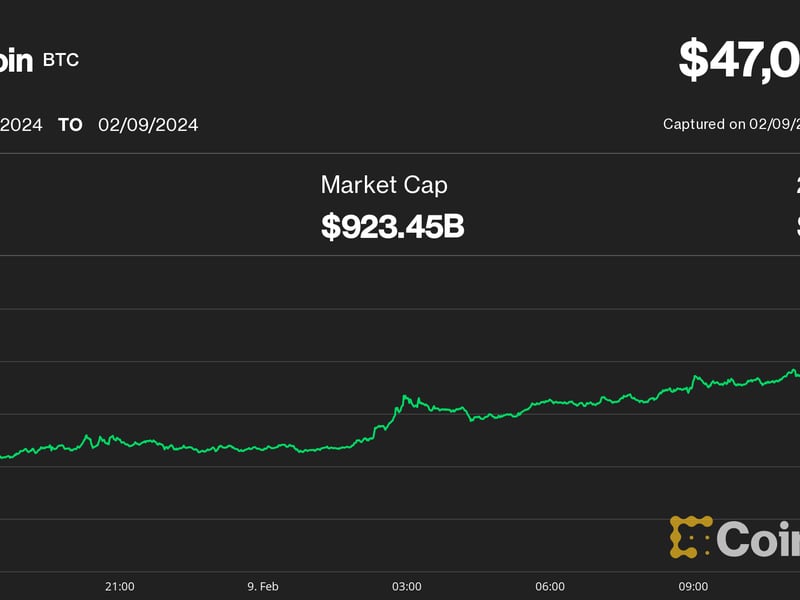The Trash Moat: When the Media Lies About Crypto

No one said understanding crypto would be easy – the technology is complicated, the slang impenetrable, the interfaces in need of improving. Sending an on-chain transaction for the first time is hard enough without having those you trust – the media, your entertainers – distracting you with scams or misdirections.
The committed heavy users of crypto have largely learned to tune that out, but for those outside the Citadel or Crypto City, much of the information they consume is a veritable trash moat. By that, I mean the dubious promotions of meme coins and the content creators looking to cash in on crypto with paid-in-kind endorsements.
Dr. Paul Dylan-Ennis is an assistant professor in the College of Business, University College Dublin.
There is a gap of quality information regarding this nascent industry that has money and intrigue enough to capture the attention of Average Joes – a gap that hucksters are only too willing to exploit.
What happens in the trash moat rarely reaches the shores of mainstream crypto. It occurs in the sweet spot just beyond the attention of the clued-in observer, who is typically focused on high-minded talk of regulation, venture capital funding and whatever is currently hot, like non-fungible tokens (NFTs), and yet it happens right there in public.
What happens when you dredge the channels? As a pioneer in trash moat dredging, I find two types of detritus tend to bubble up: red-top coverage and YouTube influencers.
Let’s start with red-top coverage. Red tops are cheap and popular tabloid newspapers. Most crypto observers get their news from a combination of industry news websites, Crypto Twitter and Telegram groups. That means they are oblivious to the fact that Safecoin is important enough to have its own section in The Express. Or that The Sun dedicates most of its coverage to shiba inu. While serious folk spend their time solemnly debating whether journalists should own crypto, the wily red topper turns the Average Joe onto the next Dogecoin clone.
Unfortunately, this practice has on occasion even spread to such venerable institutions as the British Broadcasting Corp. After all, the trash moat preys on the gap between total immersion, those who know their Taproot from their Arbitrum, and those on a day trip, who are just visiting and might not know all the tourist traps.
Much of the trash filling the moat is comprised of YouTube influencer scams. Those seem to almost entirely escape the notice of the crypto media. Logan Paul (5 million subscribers), for instance, has explicitly endorsed a “shitcoin” (his words) called Dink Doink that trades at $0.000000000045 and seems to have simply been abandoned by Paul and the developers, as if it never happened.
For Paul’s fans, this is what crypto now means: a pump-and-dump scheme where everyone thinks “well, that’s just crypto!” You won’t be surprised to learn that Paul also created an NFT project called CryptoZoo that was so lazy it used stock images, rather than original art.
Arguably the most egregious example of the YouTube Crypto hustle – and there are many to choose from – was Save The Kids coin. That coin, on crypto’s version of Mad Max, the Binance Smart Chain (BSC), was presented as a charity venture and had the backing of an extremely impressive roster of YouTube influencers, including four members of FaZe Clan, a professional esports and entertainment organization. On launch, most of the influencers involved sold their tokens immediately or “rugged” the users. It caused enough of a scandal that the four involved members were suspended or fired. That happened only because of the dogged investigative work of YouTube detective Coffeezilla. Coffeezilla is also known to cover scandals close to home, such as his video on Tether (900,000 views).
For an entire generation that gets its content from YouTube, crypto is encountered more as a Coffeezilla exposé than the cultured vibes of a Web 3 conference. Crypto is when your celebrity hero rugs you the day after you learn how to use PancakeSwap.
What does the moat tell us about contemporary crypto? The moat phenomenon is almost certainly a byproduct of the wider diffraction of the cryptocurrency ecosystem. It is now impossible to cover the industry in any comprehensive sense. Journalists, researchers and critics alike all must choose their lane. Once there, they deepen this specialist knowledge until the entry points disappear.
That leaves the Average Joe in a precarious position. To enter the Citadel (or Crypto City), they must first cross the moat, but the crossing is dangerous, the support beams weak. If they fall in, they might get swept along and never heard from again. They are still in crypto, but in some twisted, late-night casino version, populated entirely by speed freaks and con men.
And really, what is on offer with the trash moat is an old confidence trick, the pig in a poke. In that scam, the con man turns up in the village and offers a discounted pig in a small sack (a poke). Blinded by the allure of securing a cheap pig, someone will inevitably buy it fast – before someone else does! – before checking the bag. The con man slips away and the villager opens the bag to discover a cat (“letting the cat out of the bag”).
Today the trick is selling meme coins as real coins, leaving our poor Average Joe holding the bag.
Subscribe to The Node, our daily report on top news and ideas in crypto.
By signing up, you will receive emails about CoinDesk product updates, events and marketing and you agree to our terms of services and privacy policy.









